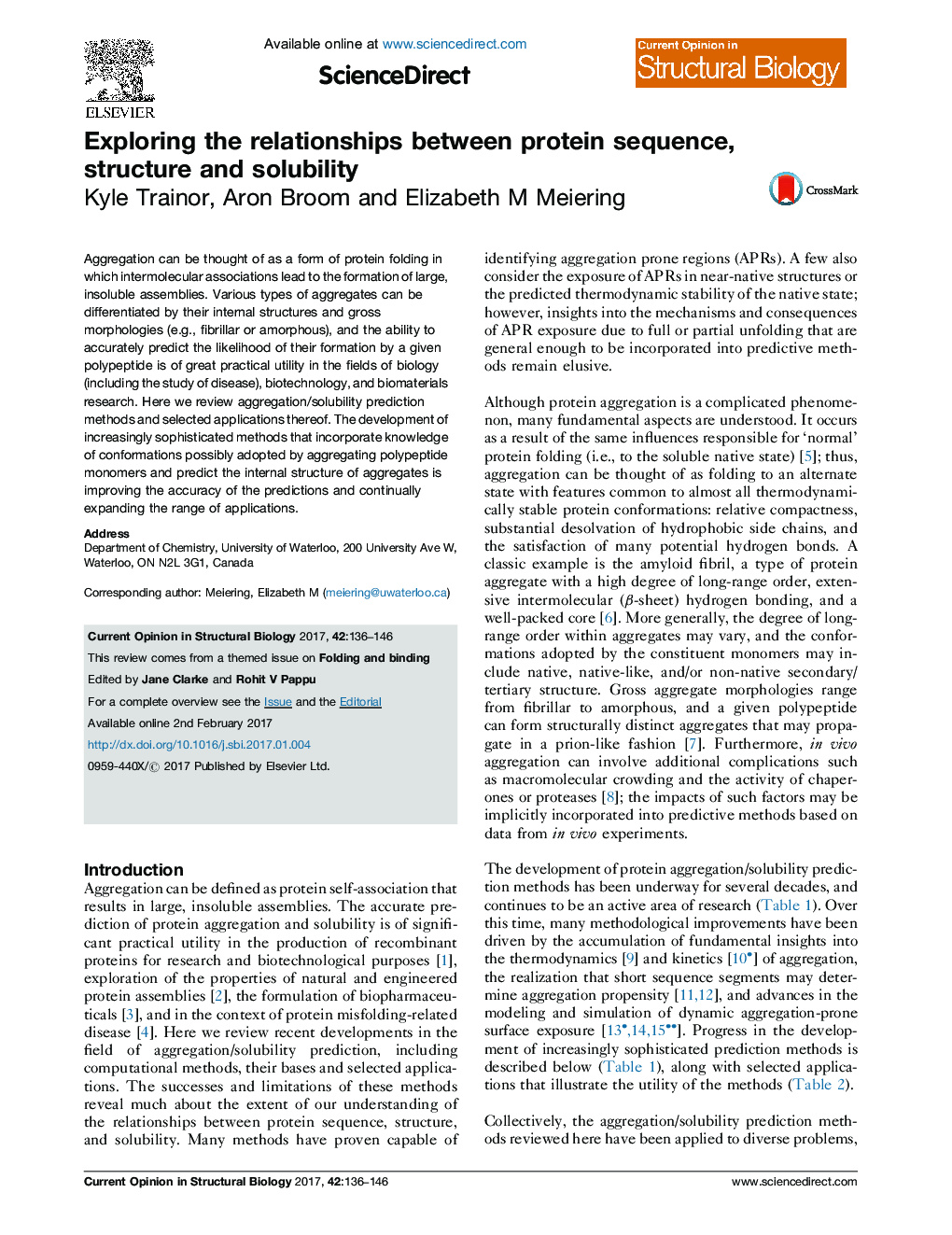| Article ID | Journal | Published Year | Pages | File Type |
|---|---|---|---|---|
| 5510881 | Current Opinion in Structural Biology | 2017 | 11 Pages |
â¢Aggregation/solubility prediction methods are widely developed and used.â¢Choice of method may sometimes be influenced by structural considerations.â¢Propensity to form intermolecular β-sheets is often predictive of aggregation.â¢Possible states of an aggregating polypeptide range from denatured to native.â¢Regions solvent-exposed in these states may participate in intermolecular interactions.
Aggregation can be thought of as a form of protein folding in which intermolecular associations lead to the formation of large, insoluble assemblies. Various types of aggregates can be differentiated by their internal structures and gross morphologies (e.g., fibrillar or amorphous), and the ability to accurately predict the likelihood of their formation by a given polypeptide is of great practical utility in the fields of biology (including the study of disease), biotechnology, and biomaterials research. Here we review aggregation/solubility prediction methods and selected applications thereof. The development of increasingly sophisticated methods that incorporate knowledge of conformations possibly adopted by aggregating polypeptide monomers and predict the internal structure of aggregates is improving the accuracy of the predictions and continually expanding the range of applications.
Graphical abstractDownload high-res image (130KB)Download full-size image
